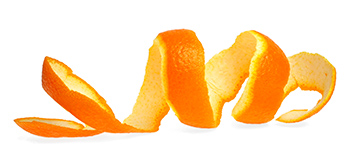Commercial disposers provide an efficient and convenient method of eliminating food waste and are beneficial to kitchen sanitation. These units not only help reduce garbage and dumpster odors, which can attract insects and vermin, but also lower trash hauling costs since the amount of overall waste being dumped is decreased.
 Disposers often come with a control, a sink or sink mount for existing sinks, a stopper, water-inlet hardware, a back-flow preventer, a solenoid valve and flow control.
Disposers often come with a control, a sink or sink mount for existing sinks, a stopper, water-inlet hardware, a back-flow preventer, a solenoid valve and flow control.
This equipment is typically installed in dish tables and pot/pan sinks as well as in vegetable prep, salad prep and meat prep areas. While a commercial disposer is more durable than the residential type and is capable of grinding more items, manufacturers still recommend using these units only for edible food waste. This is because certain waste, such as corn husks and seafood shells, can cause drain clogs.
Most commercial disposers range from ½ to 10 hp and operate essentially the same as residential disposers. Although the basic disposer design has not changed significantly over the years, there are a variety of models available. These systems also offer a choice of sizes, voltage, mounting and controls.
Controls range from simple manual start/stop operation to more sophisticated electronics that reduce water and energy use. Some disposers automatically reverse the cutting teeth to maximize the unit’s service life. Energy-saving models can detect when water becomes necessary and can turn the system off when the operator is not present.
Disposer construction materials vary, depending on the manufacturer, but most have a corrosion-resistant finish that can be easily cleaned. Disposer housing construction options include aluminum, stainless steel and cast iron, which can be either coated or plated. Also, there are different types of cutting mechanisms available with these units, such as rust-resistant nickel, stainless steel or austempered heavy ductile iron.
Disposers with rotor-fixed cutting teeth are the most common. However, units with swivel cutting teeth or a hammer mill grinder are also used in foodservice operations. All three types include a cutter operating at high speed inside a stationary shredder ring.
Voltage options include 115, 208, 230 and 460, with either a single or triple phase. Operators can choose from standard electrical wall switches or electronic controls.
Water-saving and water quality control features can help save money over time. Systems on some units help regulate the amount of water going into the disposer according to the disposer’s current draw. A sensor automatically turns off the high water flow when the grinding application is completed.
Foodservice operators can choose from a variety of options. Some disposers include tungsten carbide cutter construction for enhanced durability when processing tough waste. Self-cleaning systems can save labor and enhance efficiency. Other options with these units include flanged feet and remote start/stop switches.
Operators typically use scrapping systems in conjunction with disposers. While some systems include a disposer and use water for scrapping, others are installed in a trough application for multiple scrapping stations. Scrapping units may also use a basket instead of a disposer to collect insoluble food while allowing solubles to wash down the drain.
Some models have specific features for different
applications. For example, disposers designed for the correctional market offer optional offset shoots, which sit several inches from the sink drain to prevent tampering. Units also can be equipped with tamper-proof screws and guards that prevent arms from reaching into operating units.
It’s important to note that the disposal of any effluent into municipal wastewater (sewer) systems is typically governed under municipal bylaws/ordinances and enforced at the local level or through a regional municipal authority in accordance with state and federal environmental legislation.



